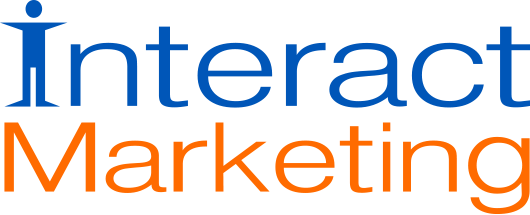AI Visibility and the New Rules of Search Performance
How AI shaped results are shifting where brands appear
Search has been evolving for years, but the past few months feel different. The traditional ten blue links layout is no longer the center of the experience. AI driven summaries, answer panels, and blend style result blocks now sit where clicks used to flow in a predictable way. At Interact Marketing, we have been tracking these shifts across client campaigns, and the patterns emerging now say a lot about where search is heading.
Some pages that have held stable rankings for years are showing lower visibility in AI influenced surfaces, while other pages that once barely registered are now appearing inside summaries far more often. These changes reflect a growing divide between content that earns trust signals from AI systems and content that may rank well yet still be overlooked by generative elements.
What We Are Seeing in Real Search Data
AI summaries tend to pull from sources that demonstrate clarity, topical focus, and consistent structure. Pages with deep coverage of a subject, strong internal linking, and structured data appear more frequently in the results where AI extracts answers. In many cases, these pages are not the number one traditional ranking. They are simply better sources for a system trained to choose concise, high authority information.
We have also noticed that recognizable brands are not the only winners. Smaller organizations with well structured content and stronger E E A T signals are gaining presence inside these AI responses, even in competitive categories. This may be the first major shift in years that gives emerging brands a real opportunity to outrank larger names in visibility, even if not in classic rankings.
Why AI Visibility Should Matter to Your Business
AI visibility affects the journey before a user ever clicks a result. If your information appears inside an AI generated preview, your brand enters the conversation at the very top of the page. If it does not appear, you lose ground even if your ranking positions remain the same.
For many industries, these early touchpoints shape the entire path to conversion. Users consume faster, skim more, and rely on summaries when researching purchases or comparing service providers. In those moments, presence inside the AI layer becomes as valuable as traditional SEO. Over time, it may matter even more.
How to Strengthen Your Position in AI Shaped Results
Brands that succeed in this new landscape take a layered approach. They invest in foundational SEO, but they also make deliberate choices about topical depth, internal architecture, and content quality. They build pages that answer questions without fluff. They use structured data whenever possible. They update content more often. All of this increases the likelihood that AI systems treat their pages as trusted sources.
If you want a deeper evaluation of how well your content appears in AI shaped results, our team has developed models to identify strengths and gaps. A good place to begin is by reviewing our SEO services, which outline strategies designed for this next era of search visibility.
FAQs
AI in marketing is used to analyze data, predict behavior, and automate tasks so campaigns perform better with less guesswork. Common uses include audience targeting and segmentation, personalizing emails, ads, and website content, optimizing ad bids and budgets in real time, generating and improving content like copy, images, and video ideas, and tracking performance while recommending next steps. It acts like a smart assistant that helps you decide who to reach, with what message, and when.
AI will not replace marketers altogether, but it will change what good marketers spend their time on. Routine tasks such as report pulling, basic ad optimization, first-draft copy, and simple design will be increasingly automated. Humans will focus more on strategy and positioning, creative direction and storytelling, understanding customers and markets, integrating channels and prioritizing budgets, and interpreting data to make judgment calls. The value shifts from doing tasks to deciding what should be done and why.
There are AI tools for almost every part of the funnel. Examples include content and copy tools like ChatGPT-style writers, blog draft assistants, and email or ad copy generators; design and creative tools like image generators, layout assistants, and ad-creative optimizers; ads and media platforms that auto-optimize bids, audiences, and creative variations; analytics and reporting tools that summarize performance and suggest optimizations; and CRM and email systems that score leads, recommend next-best actions, and personalize messages at scale. The key is choosing tools that plug into your actual workflow instead of chasing every new feature.
Yes, you can make money from AI marketing when it improves real business outcomes. AI can lower your cost per lead or acquisition, increase conversion rates through better targeting or messaging, save time so your team can focus on higher-value work, and help you identify profitable niches, keywords, offers, or audiences faster. Agencies can also productize AI-powered services such as audits, content packages, and dynamic campaigns, and charge for speed, insight, and performance instead of just hours worked.
There is no single universal 30 percent rule in AI, but many marketers follow a 70/30 or 80/20 style guideline. Roughly 70 to 80 percent of the work can be accelerated or assisted by AI, such as drafts, variations, and reports, while 20 to 30 percent should remain human-only work, including strategy, refinement, final approvals, and sensitive content. A simple way to think about it is to let AI handle most of the heavy lifting but always reserve a portion of the process for human review, editing, and judgment.
Yes, a model like ChatGPT can help with many marketing tasks. It can brainstorm campaign ideas, hooks, angles, and offers; draft emails, landing page copy, headlines, FAQs, and social posts; turn long content such as webinars, podcasts, and articles into snippets, threads, and scripts; support research into topics, audience pain points, and competitor positioning with human verification; and draft reports, summaries, and internal documentation. The best results come when you provide clear goals, target audience details, constraints, and examples.
AI marketing is worth it when you view it as a way to make good processes faster and smarter, not as a shortcut to avoid strategy. It is most useful when you use it to speed up solid workflows, keep people in the loop to protect brand voice and quality, and build repeatable processes instead of one-off experiments. If AI saves time, improves performance, or lets you test more ideas with the same budget, it is a good investment. If it only creates more noise or off-brand content, it is not.



